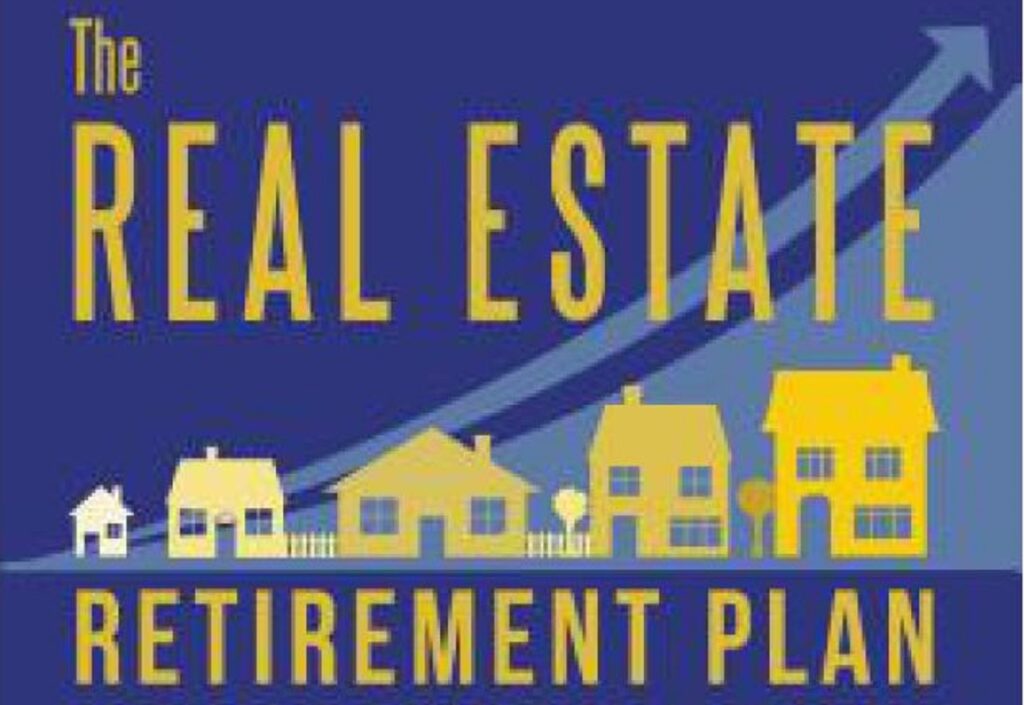Retirement planning and financial freedom are terms we are no longer strangers to. Financial freedom smells sweet and we all aspire for it.
But that can only be a reality for you if you have a smart retirement planning strategy or asset.
So, which asset class should you invest in for retirement planning and achieving that ‘peace of mind’ in your senior years? Commercial real estate.
To you, financial freedom may mean a situation where you don’t have to work unless you want to. But, at the end of the day, financial freedom implies having control over your finances and your life choices.
But, how to achieve that? Well, one surefire asset class to incorporate into your retirement planning and achieve financial freedom is commercial real estate.

Firstly, what is retirement planning?
Retirement planning is the process of preparing for a secure financial future. It involves setting goals, estimating how much money you need to save, and investing to boost your retirement savings.
Pre-retirement planning is the process of preparing for retirement, which includes understanding the changes that will occur once you retire, and developing a long-term plan for living after retirement.
Pre-retirement planning also includes assessing your readiness for retirement and developing a plan to address any areas that need improvement.
But, one of the most difficult elements of retirement planning is that there are so many questions yet no one has all the answers.
Where should you invest for retirement planning? What asset should you invest in so your senior years are secured? So many questions.
But, there is no one-size-fits-all answer. But there is one certainty. That is you should invest in commercial real estate if you want to retire in peace.
Why commercial real estate?
Commercial real estate is real estate that is utilized for commercial purposes, such as company offices that are rented out, and so on. While these commercial real estate can be utilized in a variety of ways, they are often leased to tenants and used as workplaces or residential spaces (on a big scale) and for income-generating activities. As a result, commercial real estate encompasses anything from tiny stores to large restaurants, shopping malls, and resorts.
There are several asset types in commercial real estate. While commercial real estate is traditionally divided into five major sectors: industrial, office, retail, multifamily, and special purpose, there are several more types like self-storage, medical, elder care, land, or hotel.
Why invest in commercial real estate for retirement planning?
Many investors identify the term “property” with “residential,” ignoring the potential that commercial properties may provide.
Commercial real estate investing might be a good choice for millennials looking to safeguard their future retirement income.
There are five important criteria that support commercial real estate investment as the most favorable retirement planning investing choice, providing a stable income stream and a low-risk chance for long-term capital gains.
- Increased Income Returns: One advantage of investing in commercial real estate is higher revenue. This, paired with lengthier and more stable commercial leases, makes investment in this asset class particularly appealing for retirees seeking a safe, tax-efficient income stream. Depending on the geography, present economy, and external circumstances, commercial buildings generally have an annual return on investment of 6% to 12%. (such as a pandemic). This is a substantially wider range than is typical for single-family house properties (1% to 4% at most).
- Consistent Income: The predictable revenue stream offered by long-term secured leases, with lease lengths for commercial buildings typically spanning between 3 and 10 years, is a particularly appealing characteristic of investing in commercial real estate. Furthermore, unlike most residential leases, business leases offer yearly set rental increases or a fixed sum larger than CPI plus a flat margin.
- Diversification of a Portfolio: Because of the duration of lease agreements, revenue streams linked with commercial real estate property ownership often stay steady in a tumultuous market.
- Inflation Protection: The rising tide of inflation makes it difficult to retain the underlying value of retirement planning assets while still producing enough retirement income. Diversification, solid underlying value, risk minimization, and low gearing are all effective techniques in achieving this aim. Another reason commercial real estate can be used as a hedge against inflation is that when living costs and everyday item prices rise owing to inflation, the increases tend to be reflected in increased rents and rising land values over time. Historically, commercial property prices have increased faster than inflation.
- Triple Net leases: The core idea of the triple net leases is that you, as the property owner, do not have to pay property expenditures. All property expenditures, including real estate taxes, are handled entirely by the lessee. Companies like Starbucks generally sign these sorts of leases because they want to retain a look and feel consistent with their brand, so they control those expenditures, which means you, as an owner, receive one of the lowest maintenance income generators for your money.
Affordably Invest In Commercial Real Estate For Retirement Planning Via Fractional Ownership
Sure, commercial properties are good retirement planning assets. But, they are substantially more expensive than residential properties.
So, it makes sense if you are unsure to invest. After all, commercial properties are valued in crores and not many of us have that. But, did you know that there are new-age investment solutions that allow for involvement in such high-valued assets? Fractional ownership is one such product.
It is an attractive way to invest in real estate. But, what is fractional ownership? Well, basically with the existence and aid of several fractional ownership platforms such as Assetmonk, anyone with just Rs. 25 lakhs to invest in Grade-A commercial properties.
But why fractional ownership is the best retirement planning investment? Well, you only need to lift a finger for the minimum capital, and after that, you can relax.
Because someone would manage the property for you. And you get the monthly rental income and capital appreciation returns. What an ideal investment for retirement planning right?
Is India commercial real estate the best investment for retirement planning in 2023?
Planning to incorporate commercial real estate in your retirement planning? But unsure if you should?
The year 2023 promises to usher in a new era of phenomenal growth for commercial real estate in India. In the aftermath of geopolitical uncertainty, this industry has emerged as a pillar of strength, bolstering the Indian economy. The Indian commercial real estate market has not only stabilized macroeconomic dynamics but also greatly reduced the outflow of foreign cash from the country, inspiring confidence in both local purchasers and international investors. Commercial properties not only produce profitable rental returns over long periods of time.
On the heels of corporates shifting to an OPEX model from CAPEX and a hybrid work environment, the year 2022 has shown to be an incredibly beneficial year for coworking.
The coworking sector has impacted the startup environment and the commercial real estate industry as a whole, thanks to suitable infrastructure and growing business requirements.
The coworking or managed office sector saw the greatest rise in its percentage of overall transactions, rising from 6% in the third quarter of 2021 to 23% in the third quarter of this year. According to the research, the volume traded in this industry increased by 380% year on year.
The flexible workplace revolution has begun, and 2023 will be a watershed moment in the commercial real estate industry. With the industry anticipated to develop even more in the following year, the sector has enormous growth potential.
The commercial real estate industry in India, particularly in NCR, is predicted to reach new heights in 2023 and beyond, with several intriguing trends shaping the segment’s future. The Delhi-NCR market is presently among the most favored in terms of experiencing extremely excellent growth in commercial real estate leases and returns, including retail and office spaces.
Delhi-NCR is fast rising as India’s real estate hotspot, fueled by rapidly expanding start-ups and MNCs looking to construct offices and data centers in the region. Leasing activity in the region’s commercial real estate industry is increasing as a result of the good trend. Furthermore, the retail sector in Delhi-NCR had a robust comeback in Q2 2022, fueled by new leases and shop openings, as well as a rise in demand for office co-working spaces.
According to new research from real estate company Colliers, office vacancy levels in India’s top six cities fell by 190 basis points year on year (YoY) to 16.6 percent in 2022, suggesting a strong rebound and consistency in commercial office markets. Bengaluru, Chennai, Delhi-NCR, Hyderabad, Mumbai, and Pune are among the top six cities.
With the country rising as a global manufacturing powerhouse after multinational firms relocated from China, the outlook remains favorable. The ever-increasing IT industry and e-commerce boom have also resulted in a paradigm change in demand for commercial real estate premises.
As a result, India’s commercial real investment for retirement planning is one surefire way for you to attain financial freedom.







Leave a Comment
You must be logged in to post a comment.